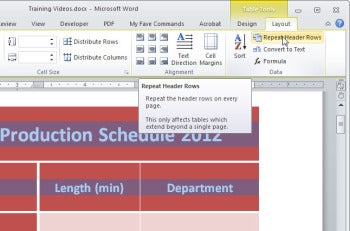

Click one of the Insert buttons in the Rows & Columns group.However, you can resize the entire object so that it fits inside the margins of your document.Click the Layout tab in the Table Tools ribbon group.Select a cell in a row or column adjacent to where you want the new row or column inserted.This way, you’re not trapped using a fixed structure if you need to add more data later. You can add more columns and rows to a table after you’ve inserted it. You can also place your text cursor within a cell, click the Select button on the Table Tools Layout tab and choose Select Table from the menu. Select an entire table: Click the table selector button in the upper-left corner of a table.You can also place your text cursor within a cell, click the Select button on the Table Tools Layout tab and choose Select Column from the menu. Select a column: Click above a column, when the cursor changes to an arrow.

You can also place your text cursor within a cell, click the Select button on the Table Tools Layout tab and choose Select Row from the menu.

Cells are small, rectangular boxes where the rows and columns intersect. To create a table, you must first determine how many columns (which run up and down) and rows (which run left to right) you want to appear in your table. Create a Publication: Tables make it easier to create calendars, brochures, business cards, and many other publications.For example, you can copy and paste a table’s information into a Microsoft Excel worksheet or Access database. Share Information: You can use tables to share information between programs.Create a Form: You can use tables to store lists of telephone numbers, clients, and employee rosters.Align Text, Numbers, and Graphics: Many people prefer to use tables for alignment instead of tab stops because text can wrap to multiple lines in a table.Tables are very useful tools when creating and formatting documents.


 0 kommentar(er)
0 kommentar(er)
